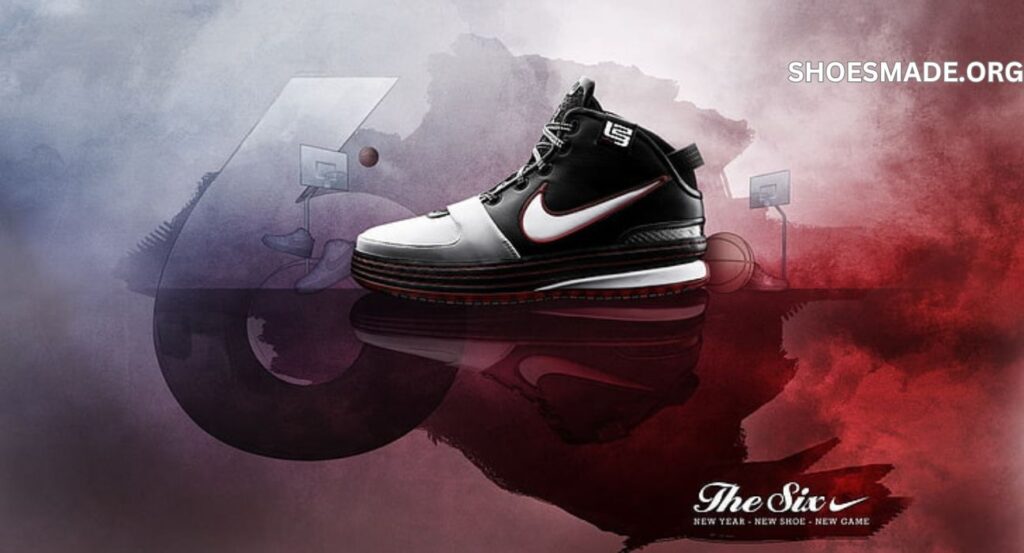Where Are Nike Shoes Made? A Comprehensive Guide

Introduction
Where are Nike shoes made? This question is often asked by consumers and sellers alike, curious about the origins of these iconic footwear. Nike shoes are manufactured in various countries around the globe, leveraging local expertise and cost-effective production methods. Understanding where Nike shoes are made helps consumers appreciate the brand’s global footprint and offers sellers insights into sourcing and manufacturing strategies.
Read More: Where Are Ryka Shoes Made? A Comprehensive Guide
History of Nike Shoe Manufacturing
Early Days and Global Expansion
Nike was founded in 1964 as Blue Ribbon Sports by Phil Knight and Bill Bowerman. The company initially focused on distributing Japanese running shoes. By the 1970s, Nike began manufacturing its own shoes. The introduction of the “waffle” sole revolutionized athletic footwear, leading to significant growth. Over the decades, Nike expanded its manufacturing operations globally, seeking cost efficiencies and access to skilled labor.
Primary Manufacturing Countries
Vietnam: Leading Producer of Nike Shoes
Vietnam is a crucial hub for Nike’s footwear production. The country produces about 50% of Nike’s shoes, thanks to its cost-effective labor and proximity to raw material suppliers. Vietnam’s factories are known for their high-quality production standards and efficient processes.
China: Key Manufacturing Hub
China is another significant location for Nike shoe manufacturing, responsible for approximately 25% of production. The country offers a well-developed manufacturing infrastructure and skilled workforce. China’s factories focus on mass production, ensuring a steady supply of Nike footwear to meet global demand.
Indonesia: Focus on Quality and Craftsmanship
Indonesia accounts for around 23% of Nike’s shoe production. The country is known for its craftsmanship and attention to detail, producing various athletic shoes that meet Nike’s stringent quality standards. Indonesia’s manufacturing capabilities make it a vital part of Nike’s global supply chain.
Additional Manufacturing Locations
Overview of Other Countries Producing Nike Shoes
Apart from Vietnam, China, and Indonesia, Nike also manufactures shoes in several other countries. These include Thailand, South Korea, Mexico, and even the United States for some high-end models. This diverse manufacturing base helps Nike mitigate risks and leverage different regional advantages.
Importance of Diverse Manufacturing Bases
Having a diverse manufacturing base allows Nike to remain flexible and resilient. It helps the company manage risks associated with geopolitical tensions, economic fluctuations, and supply chain disruptions. This strategy ensures Nike can maintain a consistent production output and meet global demand efficiently.

Materials Used in Nike Shoes
Leather: Durable and Stylish
Leather is a common material in many Nike shoes, known for its durability and ability to mold to the foot. Nike sources high-quality leather from various countries to ensure the longevity and aesthetic appeal of their footwear.
Rubber: Providing Grip and Flexibility
Rubber, both natural and synthetic, is essential for Nike shoe soles. It offers excellent grip, flexibility, and durability, crucial for athletic performance. Nike’s innovative use of rubber materials helps enhance the functionality and comfort of their shoes.
Polyester and Mesh: Lightweight and Breathable
Polyester and mesh are frequently used in Nike’s shoe uppers. These materials are lightweight, breathable, and quick-drying, making them ideal for athletic shoes. They ensure comfort and ventilation, keeping feet cool and dry during physical activity.
Foam and Air Cushioning Technology: Comfort and Support
Nike’s signature air cushioning technology and various foam materials provide superior comfort and support. These technologies help absorb shock, reduce impact, and enhance overall foot support, making Nike shoes suitable for high-performance activities.
Manufacturing Process
Design and Prototyping
The manufacturing process of Nike shoes starts with the design team. Designers create innovative and stylish concepts, which are then turned into prototypes. These prototypes undergo rigorous testing and refinement before moving to full-scale production.
Cutting and Assembling Components
The manufacturing begins with cutting various materials according to design specifications. These components, including uppers, midsoles, and outsoles, are then meticulously assembled. Skilled workers and advanced machinery ensure precision and consistency in the assembly process.
Quality Control and Final Touches
Quality control is a critical aspect of Nike’s manufacturing process. Each shoe undergoes thorough inspections to meet Nike’s high standards. After passing quality checks, the shoes receive final touches, including attaching the outsole, adding laces, and applying the iconic Nike logo, before being packaged for distribution.
Nike’s Ethical Sourcing Practices
Commitment to Fair Labor and Safe Working Conditions
Nike is committed to ethical sourcing practices. The company ensures fair labor standards and safe working conditions in its factories. Regular audits and strict guidelines help Nike maintain these standards, reflecting its dedication to corporate social responsibility.
Sustainability Initiatives in Manufacturing
Nike is also focused on sustainability. The company uses eco-friendly materials, reduces waste, and improves energy efficiency in its manufacturing processes. Initiatives like Move to Zero aim to reduce Nike’s carbon footprint and promote sustainable practices throughout the supply chain.
Challenges in Nike’s Manufacturing Process
Sourcing High-Quality Materials
One of the main challenges Nike faces is sourcing high-quality materials consistently. Ensuring a steady supply of top-grade leather, rubber, and synthetic fabrics is crucial for maintaining the quality of their shoes.
Compliance with International Regulations
Compliance with varying international regulations is another challenge. Nike must adhere to different labor laws, environmental regulations, and trade policies in each manufacturing country. This requires robust compliance mechanisms and continuous monitoring.
Managing a Global Supply Chain
Managing a global supply chain involves coordinating production, logistics, and distribution across multiple countries. Nike uses advanced supply chain management techniques to optimize efficiency and minimize disruptions, ensuring timely delivery of products worldwide.
Impact of Globalization on Nike’s Manufacturing
Benefits of Global Production
Globalization allows Nike to access diverse resources and markets. Manufacturing in multiple countries helps reduce costs, tap into local expertise, and enhance product diversity. It also enables Nike to serve a global customer base effectively.
Challenges and Risks Associated with Global Manufacturing
Despite the benefits, global manufacturing comes with risks. These include geopolitical tensions, trade restrictions, and natural disasters. Nike’s diversified production strategy helps mitigate these risks, ensuring stability and continuity in its operations.
Nike’s Competitors in Shoe Manufacturing
Adidas: Global Competitor
Adidas is one of Nike’s main competitors, known for its high-quality athletic footwear. The company also has a global manufacturing presence, producing shoes in countries like Vietnam, China, and Indonesia.
Under Armour: Expanding Footwear Range
Under Armour has made significant strides in the footwear market, offering a variety of athletic shoes. The company competes with Nike by focusing on performance and innovative designs.
Converse: Iconic Subsidiary
Converse, a subsidiary of Nike, operates independently and is known for its iconic Chuck Taylor All-Star sneakers. It continues to be a popular choice for casual footwear.
Others: H&M, Ralph Lauren, Tommy Hilfiger
Other brands like H&M, Ralph Lauren, and Tommy Hilfiger also compete with Nike, primarily in the fashion-forward and casual footwear segments. While they may not focus heavily on athletic shoes, their presence adds to the competitive landscape.
The Role of Technology in Nike’s Manufacturing
Nike utilizes advanced technology in its manufacturing processes to enhance efficiency and product quality. Automation and robotics play significant roles in cutting, stitching, and assembling shoe components. This technological integration ensures precision and consistency across all Nike products.
Regional Advantages in Nike’s Manufacturing Locations
Different regions offer unique advantages for Nike’s manufacturing. For example, Vietnam provides cost-effective labor, while China offers advanced manufacturing infrastructure. Indonesia is known for its skilled craftsmanship. These regional benefits help Nike maintain a competitive edge in the global market.
Sustainability Efforts in Nike’s Manufacturing Process
Nike is committed to sustainability in its manufacturing process. The company uses eco-friendly materials, such as recycled polyester and sustainable rubber. Additionally, Nike implements energy-saving technologies and waste reduction practices in its factories to minimize its environmental impact.
Labor Practices and Worker Conditions in Nike Factories
Nike ensures fair labor practices and safe working conditions in its factories worldwide. The company conducts regular audits to ensure compliance with its Code of Conduct, which mandates fair wages, reasonable working hours, and safe workplace conditions for all employees.
Nike’s Response to Manufacturing Challenges
Nike faces several challenges in its manufacturing process, including supply chain disruptions and regulatory compliance. The company responds to these challenges by diversifying its manufacturing locations and investing in advanced supply chain management systems. This strategic approach helps Nike maintain production stability and meet global demand.
Advantages of Multi-Country Manufacturing for Nike
Manufacturing in multiple countries offers Nike several benefits, including cost savings, access to a diverse talent pool, and reduced risk of supply chain disruptions. This strategy enables Nike to maintain a steady production flow and meet global demand efficiently.
Sustainability Initiatives in Nike’s Production Facilities
Nike is dedicated to sustainability across its production facilities. The company uses environmentally friendly materials and implements energy-efficient practices. These initiatives help reduce Nike’s carbon footprint and promote a more sustainable manufacturing process.
Ensuring High Standards: Nike’s Quality Control Measures
Nike employs stringent quality control measures to ensure the highest standards in its products. Each shoe undergoes rigorous testing and inspection to meet Nike’s quality criteria. This commitment to quality ensures that consumers receive reliable and durable footwear.
Ethical Manufacturing: Nike’s Commitment to Fair Labor
Nike prioritizes ethical manufacturing by adhering to fair labor practices. The company’s Code of Conduct mandates fair wages, reasonable working hours, and safe working conditions. Regular audits ensure compliance and promote a positive working environment in Nike factories.
Conclusion
Understanding where Nike shoes are made provides insight into the brand’s global manufacturing strategy and commitment to quality. By leveraging advanced technology, regional advantages, and sustainable practices, Nike continues to lead the athletic footwear industry. The company’s dedication to fair labor practices and proactive response to manufacturing challenges further solidify its position as a global leader in sportswear.
Read More: Where Are Saucony Shoes Made? A Detailed Guide
Frequently Asked Questions
Where are most Nike shoes manufactured?
Most Nike shoes are manufactured in Vietnam, China, and Indonesia, which together account for the majority of Nike’s production.
Why does Nike manufacture shoes in multiple countries?
Nike manufactures in multiple countries to leverage cost-effective labor, access skilled workforces, and mitigate supply chain risks.
Are any Nike shoes made in the USA?
Yes, some high-end and limited-edition Nike shoes, such as Nike Blazers, are manufactured in the United States.
What materials are commonly used in Nike shoes?
Common materials include leather, rubber, polyester, mesh, foam, and Nike’s proprietary air cushioning technology.
How does Nike ensure quality in its manufacturing process?
Nike employs strict quality control measures, including rigorous testing and inspections at every stage of the production process.
What sustainability practices does Nike follow in manufacturing?
Nike uses eco-friendly materials, reduces waste, and implements energy-saving technologies in its manufacturing processes.
What labor practices does Nike follow in its factories?
Nike adheres to fair labor practices, ensuring fair wages, reasonable working hours, and safe working conditions, monitored through regular audits.
How has globalization affected Nike’s manufacturing?
Globalization has allowed Nike to access diverse resources and markets, reduce costs, and increase production efficiency, though it also introduces challenges like regulatory compliance and geopolitical risks.
What challenges does Nike face in its manufacturing process?
Challenges include sourcing high-quality materials, maintaining compliance with international regulations, and managing a complex global supply chain.
What are the benefits of Nike’s multi-country manufacturing strategy?
This strategy provides cost savings, risk mitigation, access to local expertise, and flexibility to adjust production based on market demands.






